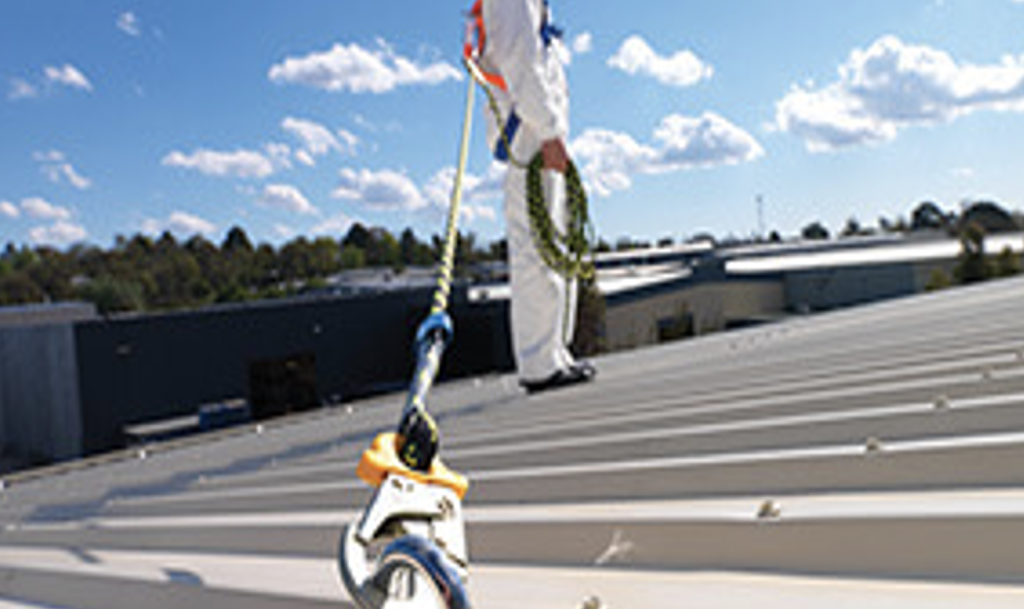Roofing work is hazardous and anyone involved in this type of work should be fully aware of the risks to prevent serious accidents from happening. Whether you’re a roofing expert or a homeowner attempting to perform repairs up above, knowing the pitfalls and putting in safety measures beforehand keeps you protected at heights.
If you’re performing regular roofing maintenance and repairs on a building, installing roof anchor points is a good place to start. There are a number of other ways to keep you safe when working at heights but what are the roofing hazards you need to be aware of? Let’s talk about them so you can be fully prepared during your next work session.
5 Roofing Hazards You Need to Know and How to Avoid Them
1. Unprotected Roof Edges
Working from heights is one of the leading causes of fatalities in the workplace. This hazard increases when the roof edges aren’t protected. Most roofs don’t offer any protection on the edges, making repairs and maintenance work in this area doubly dangerous. Installing barriers or handrails is essential If you need to be on the roof often for the purpose of maintaining or repairing the building’s HVAC system or boilers.
Installing handrails or barriers on your house wouldn’t be your first option especially if you’re not planning to spend more time than necessary on your roof! However, as a homeowner, you can avoid falling from the roof by wearing non-slip footwear and not performing repairs or maintenance in bad weather. Staying away from unprotected roof edges also mitigates the risk of slipping and falling.
2. Fragile Roof Surfaces
Being aware of fragile roof surfaces beforehand prevents unnecessary accidents from happening. Before carrying out roof repairs and maintenance, find out if there are skylights or vents installed. These structures shouldn’t be stepped on if you want to avoid falling through the roof! You also need to look out for any holes, loose tiles or rusting surfaces.
Before performing any roofing work, high-risk areas must be identified and mitigation steps implemented to protect yourself when working at heights. Inspecting the roof surface carefully before doing repair work will give your workers the information on whether there are fragile surfaces to avoid.
3. Tripping or Slippery Hazards
Protrusions, roofing components and slippery surfaces turn into serious hazards when working at heights. Tripping without having a fall arrest system in place can result in roofers falling and injuring themselves, or at worse, cause a fatality. The same applies when slipping on smooth or wet surfaces with no grip.
Looking out for protrusions is vital when on the roof and using a fall arrest system is one of the best ways to protect yourself from tripping hazards. It’s also a legal requirement in many countries for protecting workers at height. Wearing the right footwear is also essential for avoiding slippery hazards so make sure your workers are kitted out with non-slip boots.
4. Unsafe Roof Access
Statistics reveal that the number of falls from ladders has more than doubled in recent years!
Accessing the roof safely prevents mishaps from taking place. Using the right equipment to do this is vital for making height work safe. Ladders are often used to access roofs but they’re not always the safest option for reaching areas at height.
Installing a roof access hatch especially if regular maintenance work needs to be performed will give your personnel more confidence when accessing these areas. Homeowners would also benefit from installing a residential access hatch, giving them safe internal entry to their roof. Quality, custom designs will fit in with your home or building design without becoming an eyesore. They’re also lightweight and easy to use, saving you the hassle of lugging a ladder around!
5. Bad Weather Conditions
Hearing a tree fall on your house roof during a storm could make you want to inspect the tiles immediately to check for any damage. However, working at heights during bad weather is hazardous. Other bad weather conditions also make roofing work dangerous:
- Working on the roof during the heat of the day leads to dehydration and sunburn if you’re not wearing personal protection equipment such as hats and UV-protected workwear.
- Being on the roof when it’s raining or snowing increases your risk of slipping and falling if you’re not using a fall arrest system or the edges aren’t protected.
- Strong gales can unbalance you and send you over the edge if there’s no roof barrier or handrail.
Before performing work at heights, check out the weather forecast so you’re not unexpectedly caught outside during a storm.
Wearing the right gear and installing roof equipment such as anchor points will help to keep you safe if you have to work under bad weather conditions.
Summary
Roofing hazards are real and can be avoided when using the right equipment designed for heights’ work safety. Installing roof anchor points, barriers or handrails, wearing the right PPE and avoiding bad weather are some of the tips for keeping safe from these hazards. Practicing heights safety is key to avoiding the dangers of being on the roof and preventing you from becoming a falling statistic!
Laila Azzahra is a professional writer and blogger that loves to write about technology, business, entertainment, science, and health.
